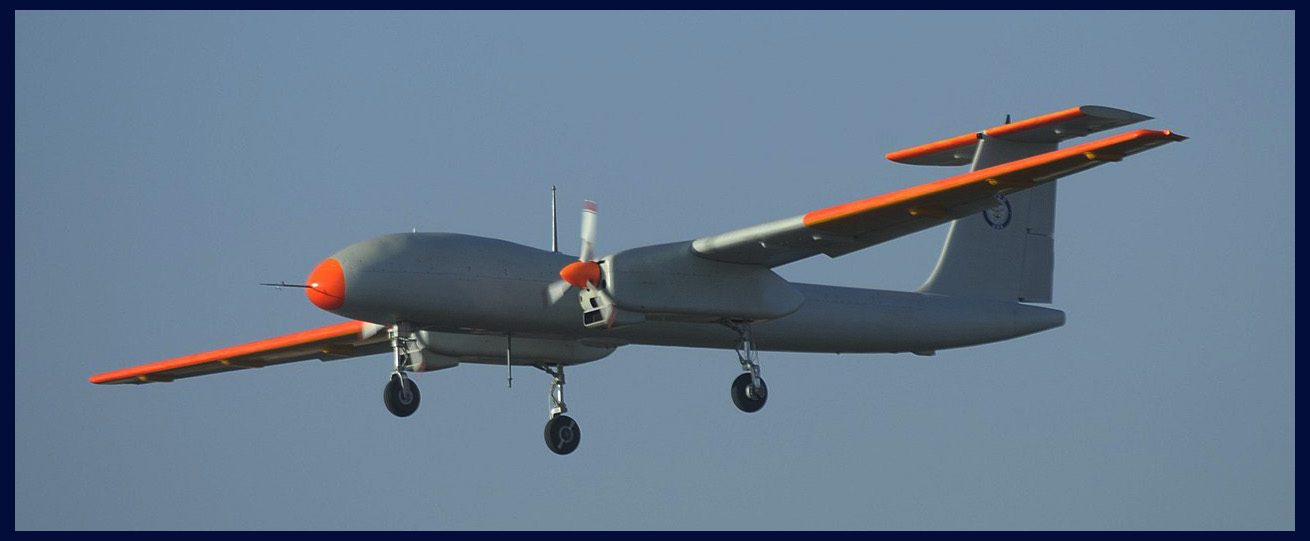TAPAS BH-201 UAV Build By DRDO & ADE, Is India’s Credible Unmanned Flying Platform. An Indigenous Project To Keep A Close Watch From A Great Height
Tactical Airborne Platform for Aerial Surveillance-Beyond Horizon-201 or short TAPAS BH-201 UAV is a Medium Altitude Long Endurance ( MALE ) Unmanned Aerial Vehicle ( UAV ) designed and developed in India by Aeronautical Development Establishment ( ADE ) and Defence Research & Development Organisation ( DRDO ). Its first flight took place in November 2016.

The Development Of TAPAS BH-201 _
It all started with the development of manned, twin-seater Light Canard Research Aircraft ( LCRA ) by the National Aerospace Laboratories ( NAL ) team headed by Prof. Rustom Damania. The design of Rustam-I, a MALE drone developed by ADE, was derived from LCRA. In Rustam-I, necessary sensors and avionics were integrated and tested with a required aerodynamic configuration which later proved as a test bed for the Ruatam-II. But it has its limitations in payload, endurance and altitude.
To improve these limitations, Rustam-H was developed with a completely new and improved design. It featured a larger airframe, higher payloads and an increase in composite materials in the airframe, increased lift to Drag ratio, higher redundancy and stronger data link and better propulsion systems. And later on, the improved version of Rustam-H has been reconfigured as TAPAS BH-201 to define the Specified Qualitative Requirements. The project started at the cost of ₹1,540.74 crore but was later revised to ₹1,786 crores as of 2022
Key Features Of Tapas BH-201:
- Altitude and Endurance: It has a service ceiling of 30,000 ft altitude and an endurance of 18+ hours currently. Later on, it will increase to 24-hour endurance.
- Range: It has a range of 250+ km Line Of Sight ( LOS ) with C-band frequency. And 1000+ km range with SATCOM ( Satellite Communication, with K band frequency )
- Sensors: Various sensors are used in the aircraft to communicate with ground stations, other aircraft and Satellites. A few Key sensors are _ Airborne Integrated Payload Processing Unit ( AIPPU ) & Ground Integrated Payload Processing Unit ( GIPPU ). Airborne Spread Spectrum Modem ( ASSM ), Radio Finger Printing System ( RFPS ), Solid State Power Amplifier ( SSPA ), Traffic Collision Avoidance System ( TCAS ), Radar Warning Receiver ( RWR ), Identification, Friend or Foe ( IFF ) and more under development…
- Radar: It features Synthetic Aperture Radar ( SAR ) It is mechanically steerable radar, capable of performing functions such as Map Generation, 3D Mapping, Patrol Missions etc. It works in Three Modes: Strip Mode, Spotlight Mode, Ground Moving Target Indication ( GMTI ) Mode.
- Propulsion: Currently the aircraft features Austro E4 engines with a power of 168HP. In future, that will get replaced by indigenous higher-powered engines.
- Payload: It has a total payload capacity of up to 350 kg. The payload consists of various devices and sensors.
- Stealth Aspect: Kevlar as Radar Absorbent Material ( RAM ) along with Carbon Fibre Composites ( CFC ) is sandwiched into a layer of 3mm thickness in the airframe. This layer on the airframe is responsible for minimal radar deflections, thus improving the stealth characteristics of the aircraft.
- Combat Capability: As per Y Dilip, Director of ADE, though the primary role of Tapas is ISR ( Intelligence, Surveillance and Reconnaissance) it is pre-designed to carry certain weapons and can be converted into an armed platform as and when required by the user.
- Indigenous Content: The aircraft currently has 75% indigenous content with most of the critical subsystems developed indigenously. It will rise more when the indigenous engine from CVRDE is integrated in near future.

Significance Of The TAPAS Programme:
India is a multi-billion dollar market for military drones which currently have very useful applications such as monitoring LOC and LAC, striking terrorist hubs, monitoring sea lanes, longer duration mission etc. Tapas will be a significant step in the military drone market for India as with its development many important, critical technologies, components and subsystems have been developed indigenously and mastered.
Tapas can prove to be a great template for the upcoming drones similar to the Tejas project where experience gained in the consolidation of the mastered technologies has contributed to the development of bigger and more capable platforms like Tejas Mk2, TEDBF etc. It will also provide a window of opportunity for private industry involved in the manufacturing of various Line Replacing Units (LRUs) for HAL under a modular approach.
However, the Tapas project is a significant development in the Indian drone industry and even has the potential of becoming an ‘ industry coming off age’ for the development of military drones in India similar to the Tejas project. It’s high time the user, i.e. Indian armed forces order it in good numbers than rely on foreign silver bullets for a similar role. This will move India a step closer to self-reliance or ‘ Atmanirbhar Bharat’ and will also place India on the list of a few nations that manufacture high-end military drones.

TAPAS BH-201 UAV Specifications:
- Length: 31 ft 2 in ( 9.5 m )
- Wingspan: 67 ft 7 in ( 20.6 m )
- Empty Weight: 1,800 kg ( 3,970 lb )
- Payload capacity: 350 kg ( 772 lb )
- Powerplant: 2 × NPO-Saturn 36T engines wing-mounted turboprop, 100 HP each
- Propeller: constant-speed, three-bladed propeller
- Maximum speed: 224 km/h
- Ferry range: 1,000 km
- Endurance: 24 hours
- Service ceiling: 30,000 ft ( 9,144 m )
